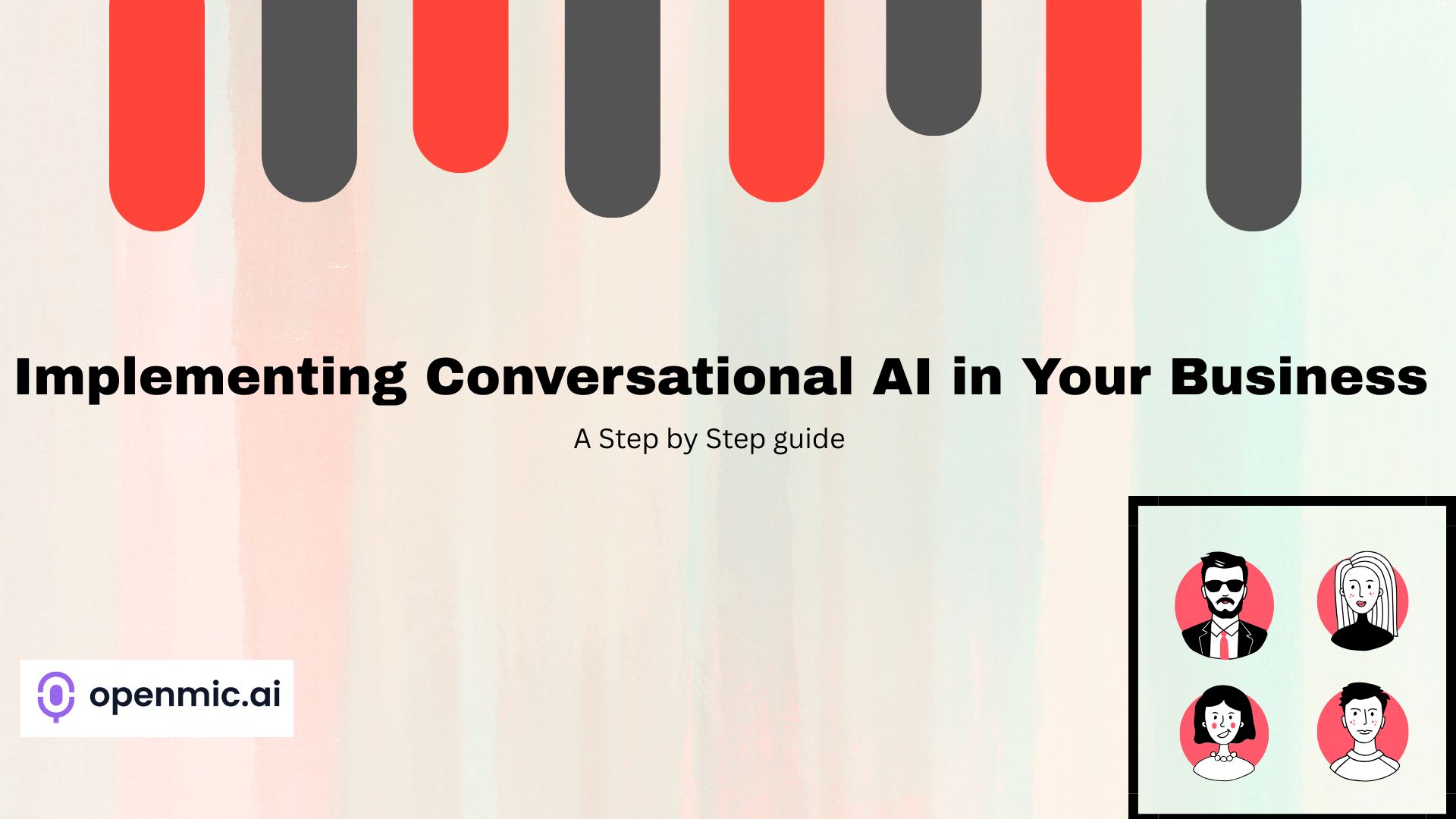In today’s fast-paced digital world, customers expect instant, personalized, and seamless interactions with businesses. Conversational AI has emerged as a game-changer, enabling companies to meet these expectations while improving operational efficiency. Whether it’s through chatbots or voice assistants, conversational AI is transforming customer service, sales, and marketing.
This blog provides a simple yet comprehensive guide to deploying conversational AI in your business to enhance customer interactions and streamline operations.
What is Conversational AI?
Conversational AI refers to technologies that enable machines to understand, process, and respond to human language in a natural and meaningful way. It powers chatbots, voice assistants, and other virtual agents that can handle customer inquiries, automate repetitive tasks, and provide personalized support.
.png)
Why Your Business Needs Conversational AI
- 24/7 Availability: Always-on support for customers across time zones.
- Enhanced Customer Experience: Provides quick and accurate responses, reducing wait times.
- Cost Efficiency: Automates repetitive tasks, freeing up human agents for complex issues.
- Scalability: Handles high volumes of inquiries simultaneously without compromising quality.
- Data Insights: Collects valuable customer data for better decision-making.
Step-by-Step Guide to Deploying Conversational AI
1. Define Objectives and Use Cases
- Start by identifying the specific problems you want conversational AI to solve.
- Common use cases include:
- Automating customer support.
- Streamlining appointment scheduling.
- Providing personalized product recommendations.
- Set clear goals such as reducing response times or increasing customer satisfaction scores.
2. Choose the Right Platform
- Evaluate conversational AI platforms based on:
- Features: Look for NLP capabilities, multi-language support, and integration options.
- Scalability: Ensure the platform can handle your current and future needs.
- Ease of Use: Consider no-code or low-code platforms for faster deployment.
- Popular platforms include tools that integrate with CRMs like Salesforce or messaging apps like WhatsApp.
BTW! Openmic.ai integrates smoothly with every major CRM tool available in the market.
3. Design Conversational Flows
- Create a flowchart that maps out all possible user queries and responses.
- Focus on designing intuitive and natural interactions.
- Use conditional logic to personalize responses based on user behavior and intent.
4. Train Your AI Model
- Feed the AI system with large datasets containing examples of real conversations.
- Include variations in language (e.g., slang, accents) to improve accuracy.
- Train the model to recognize intent, sentiment, and context for human-like interactions.
5. Integrate with Existing Systems
- Connect your conversational AI platform with:
- CRM tools like HubSpot or Zendesk for unified customer data.
- Payment gateways like PayPal or Razorpay for seamless transactions.
- Marketing platforms like WebEngage for targeted campaigns.
- Ensure seamless integration to provide a holistic customer experience.
6. Test Thoroughly
- Conduct extensive testing before deployment:
- Functional testing: Ensure all features work as intended.
- Scalability testing: Verify performance under high traffic loads.
- User experience testing: Gather feedback from beta users to refine interactions.
- Regularly update the system based on user feedback.
7. Deploy and Monitor Performance
- Launch your conversational AI solution gradually (e.g., start with one channel).
- Monitor key metrics such as:
- Response accuracy.
- Average handling time (AHT).
- Customer satisfaction (CSAT) scores.
- Continuously optimize the system using analytics and real-time data insights.
Best Practices for Success
- Focus on Customer-Centric Design: Ensure your AI prioritizes user needs over flashy features.
- Keep Conversations Natural: Avoid overly robotic responses by leveraging advanced NLP models.
- Plan for Escalations: Design workflows that seamlessly transfer complex queries to human agents when needed.
Common Pitfalls to Avoid
- Overpromising Capabilities: Be realistic about what conversational AI can achieve initially.
- Neglecting Training Data: Poor-quality data leads to inaccurate responses.
- Ignoring Scalability Needs: Plan for future growth from the outset.
Conclusion
Deploying conversational AI doesn’t have to be overwhelming. By following this step-by-step guide—defining clear objectives, selecting the right platform, designing effective conversational flows, training your model thoroughly, integrating seamlessly with existing systems, testing rigorously, and monitoring performance—you can unlock the full potential of this transformative technology.
Start your journey today and revolutionize how your business interacts with customers!
84% of employees who use trust their direct manager






.svg)


